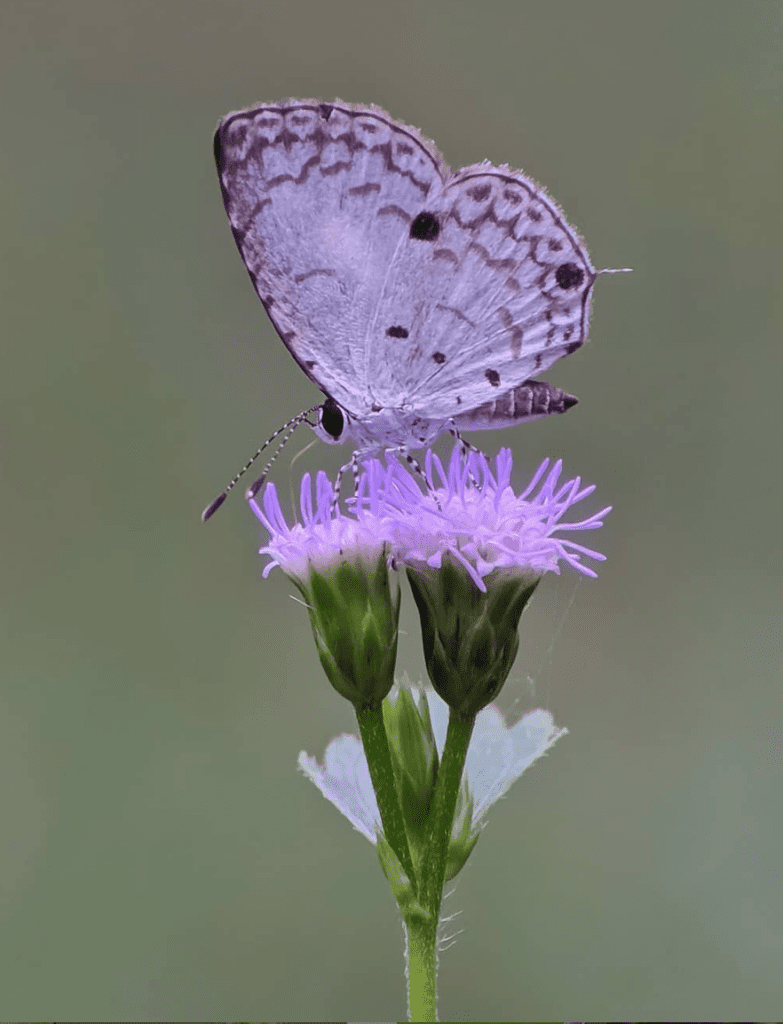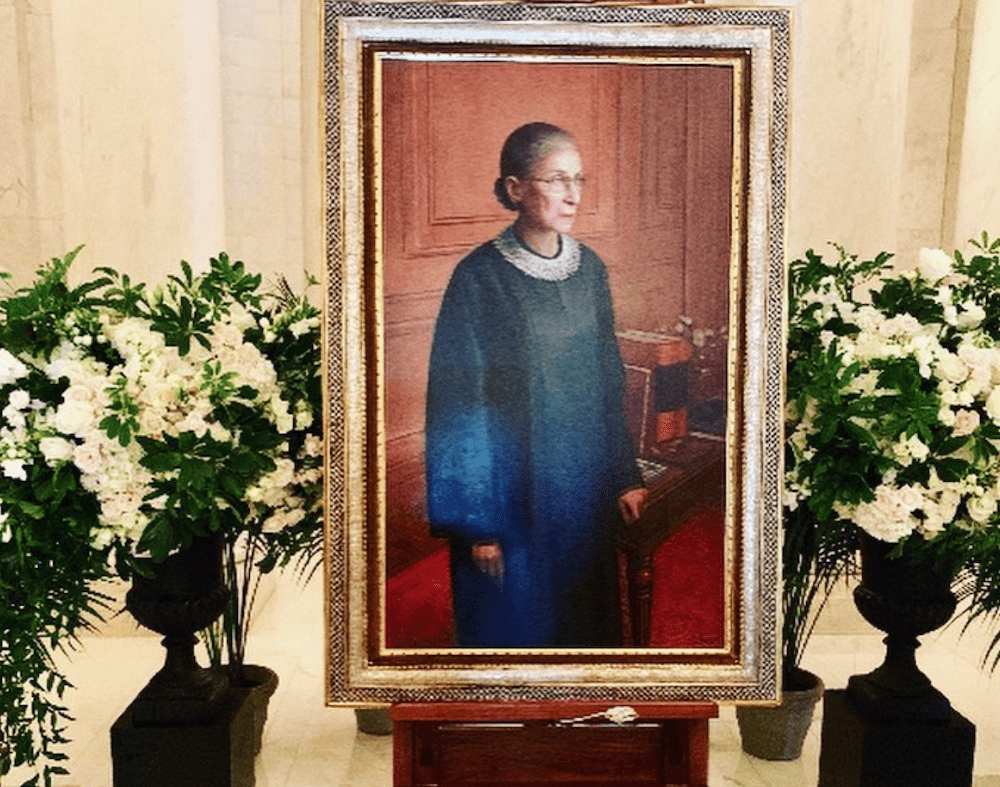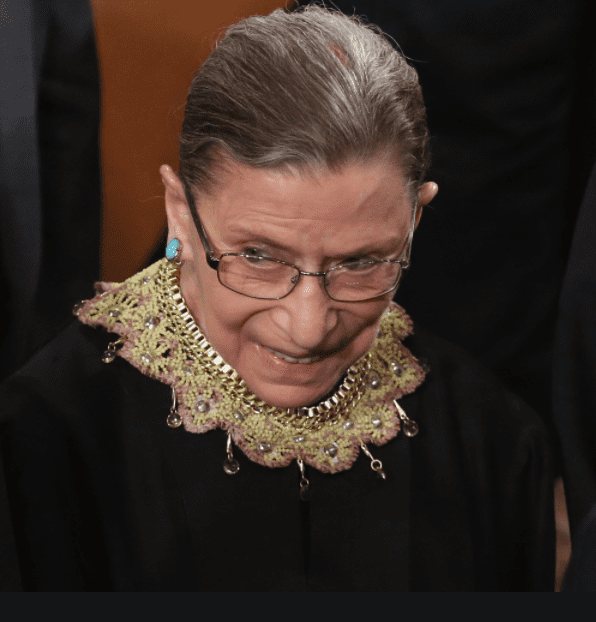Like a Thistle, Judge Ruth Bader Ginsburg Symbolized Determination

Doesn’t this lovely picture remind you in a way of the signature Jabot collars beloved Supreme Court Judge Ruth Bader Ginsburg would wear?
For some reason, this photo by @Subariwahid evoked that thought along with others such as RIP and thank you RBG for helping every woman in the workplace have the right for equality and fair treatment.
As Chief Justice John Roberts said, “Our nation has lost a justice of historic stature” as well as someone who was “a resolute champion of justice.”
The thistle is also such a symbol here in the photo since it represents bravery, devotion, durability, strength and determination. So RBG.
But actually, her favorite flowers were the sweet-smelling freesia and white hydrangeas.
Calling it an honor of his life, Florist Michael Volanni in Washington, D.C. had the privilege of creating the arrangements at the Supreme Court viewing.
“I created them with strength and a lot of flow and a lot of movement,” said Volanni, a former monk. “I think she’s an incredibly strong human being.”
In the language of flowers, white freesia stands for purity and trust while hydrangeas represent gratitude and heartfelt emotions – which we are certainly feeling for her service to the nation.

As petite and frail as this butterfly in Wahid’s picture, Ginsburg was unwavering in her belief that women should have rights in the workplace. After graduating from Harvard top of her class, she couldn’t get a job.
But this fueled her belief that this injustice should be transformed. The butterfly develops through a process called metamorphosis which is a Greek word that means transformation and change in shape.
Ginsburg’s mother Celia had encouraged her daughter to get an education after she was stung by her own family’s resistance to her education in favor of her brother.
“Reading shaped my dreams, and more reading helped me make my dreams come true,” she said. Her mother also told her to always be a lady.
“And for her, that meant to be your own person, to be independent,” she recalled.
Ginsburg had a loving marriage to Martin Ginsburg whom she met while at Cornell University. She was the highest-ranking female student in her graduating class.
“If you have a caring life partner, you help the other person when that person needs it,” she said. “I had a life partner who thought my work was as important as his, and I think that made all the difference for me.”
When her husband was stationed in Oklahoma, she worked at the Social Security Administration but got demoted for being pregnant. Sound familiar?
Then she enrolled at Harvard Law School in 1956. The dean of Harvard Law invited the students to a dinner where he asked the few female law students, “Why are you at Harvard Law School taking the place of a man?”
She then transferred to Columbia Law School and became the first female tenured professor.
As Ginsburg always stated, it takes good men also to do good things in our culture. She not only had her beloved husband cheering her on but early on, Columbia Law Professor Gerald Gunther pushed for Edmund Palmieri of the U.S. District Court for the Southern District of New York to hire her. When he balked, Gunther said he would never give him a replacement clerk if Ginsburg wasn’t hired.
These are the pivotal moments that help someone climb up a ladder and have those barriers broken by decent-minded people who looked at talent and not gender.
She then embarked on being an advocate for gender-discrimination suits and noted that it was harmful to both men and women. She found the Women’s Rights Project at the American Civil Liberties Union and helped craft legal cases for women which she presented before the Supreme Court.
“Women belong in all places where decisions are being made,” she said. “It shouldn’t be that women are the exception.”
In 1993, she was appointed a Supreme Court Judge by President Bill Clinton, becoming the second female Justice in history.

Aside from her passion for justice, she was known for her fashionable Jabot collars. In an interview with Katie Couric, she showed the journalist her collection. Ginsburg would wear the same one when she wrote the majority opinions. Fans would look for others when she had a dissenting opinion but here were her favorites.

As for her legacy, she would tell her law students the following sentiment.
“I tell law students… if you are going to be a lawyer and just practice your profession, you have a skill—very much like a plumber,” she said. “But if you want to be a true professional, you will do something outside yourself… something that makes life a little better for people less fortunate than you.”
For her service, she also became the first woman as well as Jewish citizen to lie in state at the Capitol.
Jill Brooke is a former CNN correspondent, Post columnist and editor-in-chief of Avenue and Travel Savvy magazine. She is an author and the editorial director of FPD.
